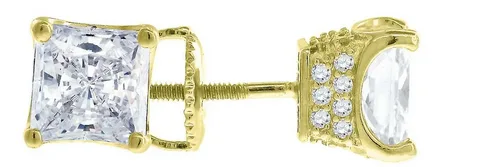How Eurofer Iron Works: Medical Use Explained

Eurofer Iron has become a popular solution for managing iron deficiency across various age groups. But what exactly is Eurofer Iron, how does it work, and who should use it? This comprehensive guide breaks down the science, benefits, dosage, and safety of this medical iron supplement in a simple and informative way. Whether you’re a patient, caregiver, or healthcare student, this article will help you fully understand how Eurofer Iron works and how it supports overall health.
What Is Eurofer Iron and Why It Matters
Eurofer Iron is a medicinal iron supplement primarily prescribed to treat and prevent iron deficiency anemia. It contains iron polymaltose complex (IPC), a form of iron designed for better absorption and fewer side effects compared to traditional iron salts like ferrous sulfate.
Iron plays a crucial role in producing hemoglobin — the protein in red blood cells responsible for carrying oxygen throughout the body. When your iron levels drop, your body can’t make enough healthy red blood cells, leading to fatigue, weakness, and other symptoms of anemia. That’s where Eurofer Iron steps in.
How Eurofer Iron Is Different from Other Iron Supplements
Not all iron supplements are created equal. Eurofer Iron stands out due to its non-ionic, stable iron complex form that ensures gradual absorption and minimal gastrointestinal side effects. Here’s what sets it apart:
Better Tolerability
Many iron supplements cause nausea, constipation, or a metallic taste. Eurofer Iron is known to be gentler on the stomach, making it suitable for long-term use, especially in children and pregnant women.
Controlled Absorption
Because it releases iron gradually in the intestine, the risk of overdose or iron toxicity is significantly lower. This makes it a safer choice for those who need continuous iron supplementation.
No Need for Vitamin C
Traditional iron tablets often require vitamin C to aid absorption. Eurofer Iron, thanks to its unique formulation, does not depend on vitamin C, simplifying the dosing process.
Who Needs Eurofer Iron?
Eurofer Iron is commonly prescribed to individuals with diagnosed or high-risk iron deficiency. The following groups are typically considered suitable candidates:
Pregnant Women
During pregnancy, the body’s demand for iron increases significantly. Eurofer Iron helps support the increased blood volume and fetal development without causing discomfort often associated with iron supplements.
Children with Iron Deficiency
Pediatricians often recommend Eurofer Iron syrup for children who have low hemoglobin levels or poor dietary iron intake. It is easier to administer and has better taste compliance than other pediatric iron formulas.
Individuals with Chronic Illness
Patients undergoing dialysis, chemotherapy, or those with chronic gastrointestinal disorders often struggle with maintaining healthy iron levels. Eurofer Iron provides a reliable solution for managing iron loss in these cases.
Women with Heavy Menstrual Bleeding
Excessive blood loss during menstruation is a common cause of anemia in women. Eurofer Iron helps replenish iron stores and combat fatigue and weakness.
How Eurofer Iron Works Inside the Body
Understanding how Eurofer Iron works requires a basic look at its journey through your body:
- Oral Administration: Eurofer Iron is taken by mouth in the form of syrup or tablets.
- Absorption in the Small Intestine: Unlike ferrous iron, the iron polymaltose complex is absorbed via controlled mechanisms, reducing free iron and irritation.
- Binding with Transferrin: Once absorbed, the iron binds to transferrin, a protein that transports it to the bone marrow.
- Hemoglobin Production: In the bone marrow, iron is used to produce hemoglobin, improving oxygen delivery to tissues.
This mechanism ensures efficient correction of iron deficiency without overwhelming the body with unbound iron.
Recommended Dosage and Administration
Correct dosage of Eurofer Iron depends on age, severity of deficiency, and individual health conditions. Always follow your doctor’s prescription, but here’s a general overview:
Adults
- Tablets: Usually one tablet per day, ideally on an empty stomach or as prescribed.
- Syrup: 10–20 mL daily, depending on iron levels.
Children
- Syrup form is preferred.
- Typical dosage: 3–6 mg of elemental iron per kg of body weight daily.
Pregnant Women
- Often prescribed during the second and third trimesters.
- Daily tablet or syrup depending on tolerance and iron status.
Note: Taking Eurofer Iron with tea, coffee, or dairy products may reduce absorption. It’s best taken with water or juice, away from meals.
Possible Side Effects of Eurofer Iron
Although Eurofer Iron is generally well-tolerated, some users may still experience mild side effects. Understanding them helps you manage expectations:
Common but Mild
- Dark stools (harmless and expected)
- Mild constipation
- Nausea if taken on an empty stomach
Rare Side Effects
- Stomach cramps
- Allergic reactions (rash, swelling)
- Diarrhea
If any severe reactions occur, medical attention is necessary. Always inform your healthcare provider about existing medical conditions or other medications you are taking.
What to Avoid While Taking Eurofer Iron
To ensure optimal performance and safety, avoid the following:
- Overdosing: Never double the dose if a dose is missed. Iron toxicity is rare with IPC but still possible.
- Calcium-rich foods or supplements: These hinder iron absorption.
- Antacids or tetracycline antibiotics: May interact with iron and reduce effectiveness.
Eurofer Iron in Special Conditions
Kidney Disease
Patients with renal issues often struggle with anemia. Eurofer Iron is sometimes part of a broader treatment plan, particularly when injectable iron isn’t viable.
Post-Surgery Recovery
After major surgery or blood loss, iron supplementation is critical. Eurofer Iron helps in restoring hemoglobin levels and improving recovery time.
Vegetarian and Vegan Diets
Individuals following plant-based diets are at higher risk of iron deficiency due to lack of heme iron. Eurofer Iron is suitable as a supplement in such cases.
How Long Does Eurofer Iron Take to Show Results?
Iron levels don’t improve overnight. Most patients begin to feel better within 1 to 2 weeks, but full recovery of iron stores might take 3 to 6 months depending on severity.
Blood tests are usually repeated after a month to assess improvement in hemoglobin and ferritin levels. Do not stop taking the supplement early, even if symptoms improve.
Real-World Patient Experiences with Eurofer Iron
Many users report positive results, particularly in energy levels, mood improvement, and reduced dizziness. Parents of young children mention improved appetite and reduced irritability after consistent use.
Here are a few examples from general feedback:
- “I finally found an iron supplement that doesn’t upset my stomach.”
- “My child takes the syrup without fuss — no bitter taste!”
- “It helped bring my iron levels back up before surgery.”
Final Thoughts on Using Eurofer Iron for Health
Eurofer Iron offers a modern, well-tolerated solution for iron deficiency in both children and adults. Its unique formulation ensures effective absorption with fewer side effects, making it a preferred choice among healthcare professionals.
Understanding how Eurofer Iron works helps patients take it correctly and consistently — which is the key to seeing real improvement. If you’re struggling with symptoms of anemia or belong to a high-risk group, discussing Eurofer Iron with your doctor could be an important step toward better health.
For lasting results, always use Eurofer Iron under medical supervision, follow the dosage instructions carefully, and maintain a balanced, iron-rich diet to support long-term wellness.



